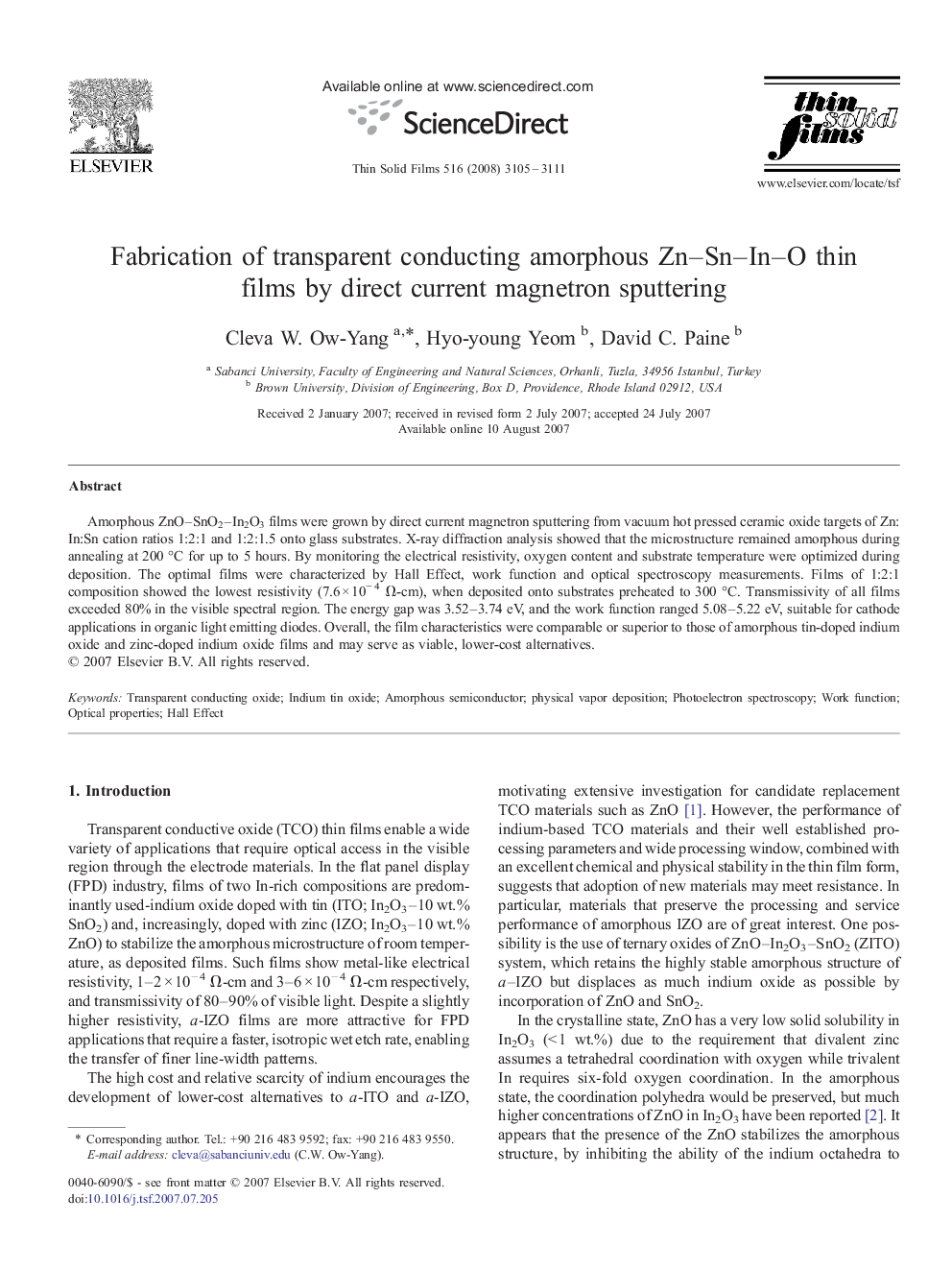| Article ID | Journal | Published Year | Pages | File Type |
|---|---|---|---|---|
| 1673454 | Thin Solid Films | 2008 | 7 Pages |
Amorphous ZnO–SnO2–In2O3 films were grown by direct current magnetron sputtering from vacuum hot pressed ceramic oxide targets of Zn:In:Sn cation ratios 1:2:1 and 1:2:1.5 onto glass substrates. X-ray diffraction analysis showed that the microstructure remained amorphous during annealing at 200 °C for up to 5 hours. By monitoring the electrical resistivity, oxygen content and substrate temperature were optimized during deposition. The optimal films were characterized by Hall Effect, work function and optical spectroscopy measurements. Films of 1:2:1 composition showed the lowest resistivity (7.6 × 10− 4 Ω-cm), when deposited onto substrates preheated to 300 °C. Transmissivity of all films exceeded 80% in the visible spectral region. The energy gap was 3.52–3.74 eV, and the work function ranged 5.08–5.22 eV, suitable for cathode applications in organic light emitting diodes. Overall, the film characteristics were comparable or superior to those of amorphous tin-doped indium oxide and zinc-doped indium oxide films and may serve as viable, lower-cost alternatives.
